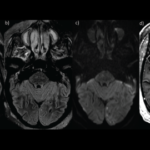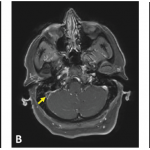From a teaching perspective, trainees can better assess the impact their decisions make on the long-term outcome of the patient when they are part of the “team” from the start.
3. Collaboration creates opportunities.
Collaboration with rheumatologists, neurologists and other specialists is critical to the success of our mission. When evaluating patients in the clinic, the physical proximity to others taking care of these patients has been invaluable. For example, we see patients within the clinical area of our rheumatology division, which allows us to see patients together with our rheumatology colleagues. It streamlines the care of patients, greatly improves communication, limits the need for patients to travel and enhances the care we provide.
4. Employ a dedicated administrative assistant.
In our practice, we have found a large range of urgency among referrals and messages. Over the past few years we have acquired the funds to employ an administrative assistant who screens our referrals. She is able to appropriately screen for urgency and contact us if patients need to be seen sooner than time slots are available. Having a dedicated coordinator allows us to exclude patients who may not be appropriate for the clinic. This ultimately improves our accessibility and allows the best utilization of resources.
5. Incorporate a physician assistant.
As with many other neurology specialties, wait times to be seen in our clinics have increased with expected increasing demand.3 It has been well documented that integration of physician assistants into the care of patients receiving chemotherapy (like many of our patients do) and for neurology patients reduces wait times.4,5 The addition of an advanced practice provider to our group has allowed better access to our clinics and safer patient monitoring. We utilize our physician assistant to arrange rapid follow-up on inpatients. We also have regularly scheduled visits in between visits for drug and disease monitoring.
Through these clinic advances, we have found increased patient and physician satisfaction. Our collaborations within divisions, providers and administrators have allowed us to deliver more holistic care. We anticipate future evolution in our clinic to include the collaborative development of guidelines, collection of biomaterials and further expansion into clinical trials.
The Clinic in Action
A 58-year-old man with a history of heart failure, chronic kidney disease, diabetes and rheumatoid arthritis being treated with etanercept presented to his rheumatologist for routine care and was noted to have significant difficulty walking.



